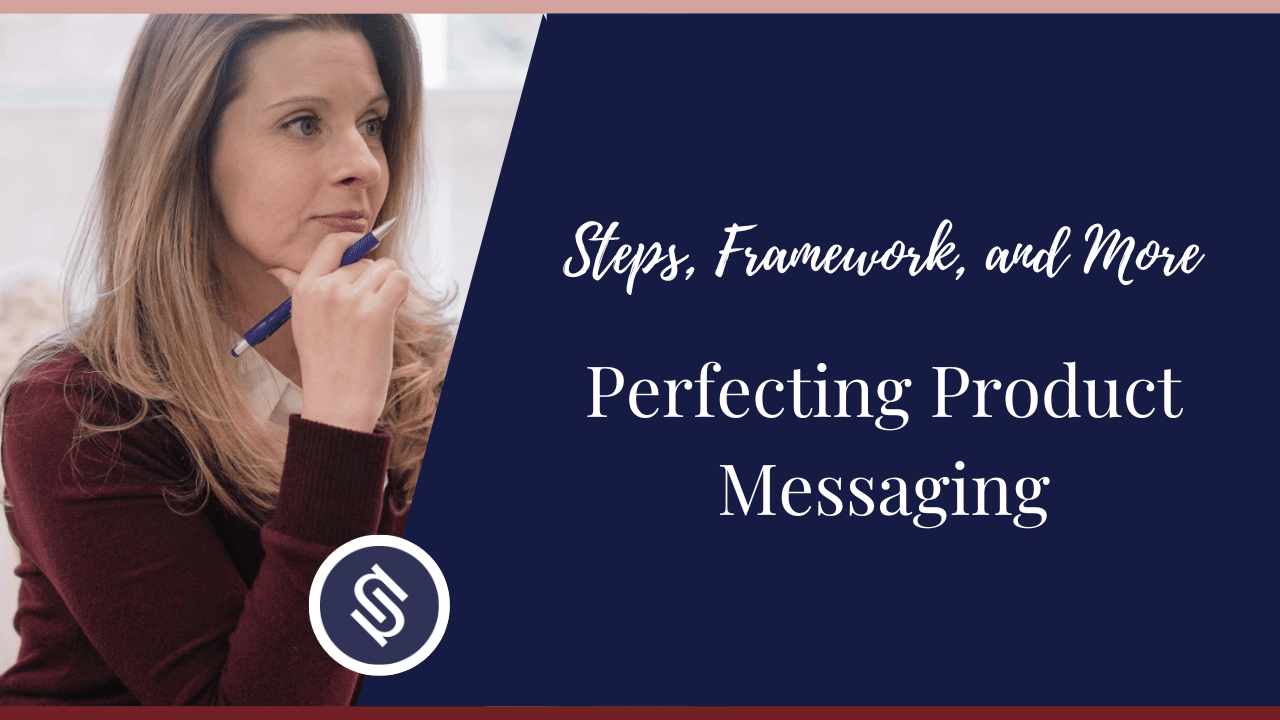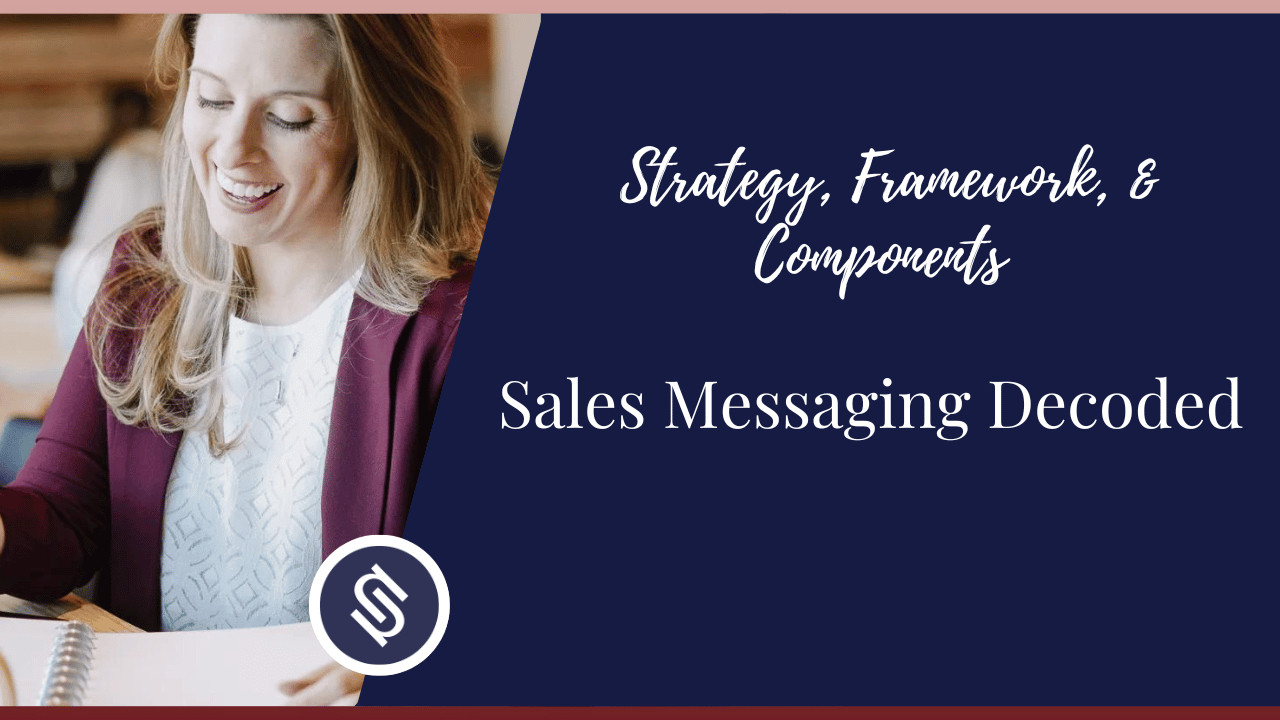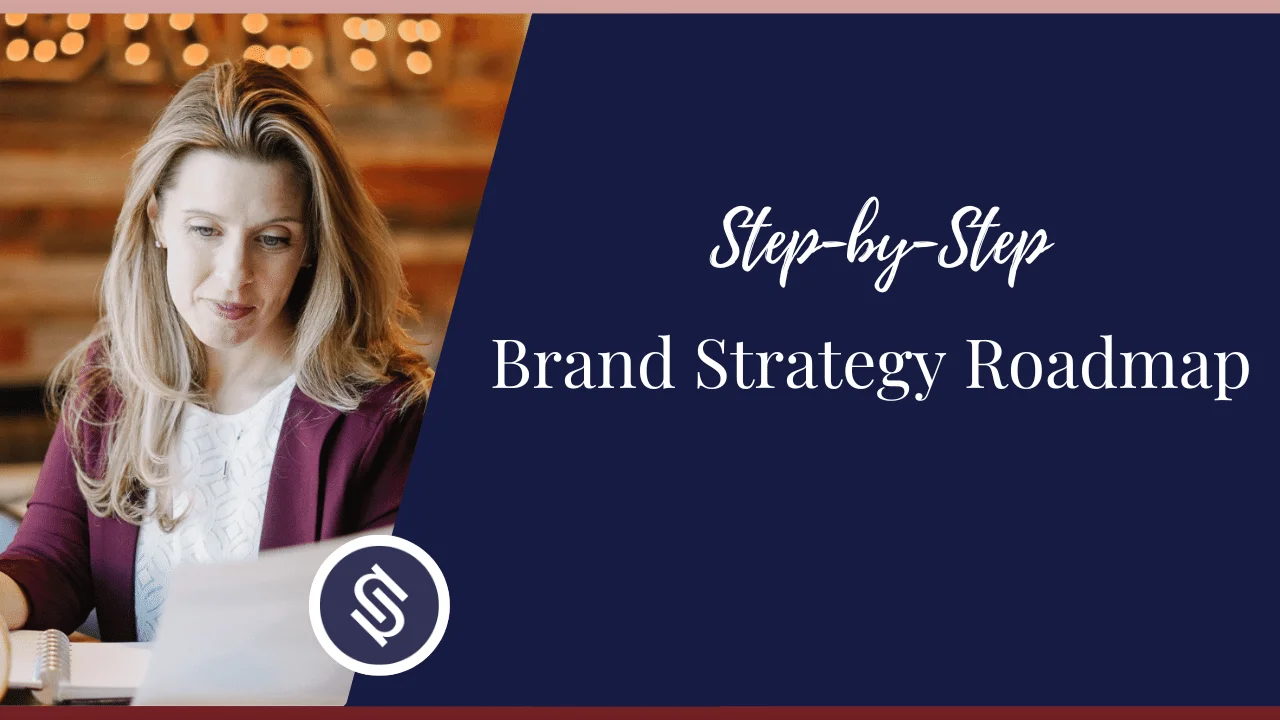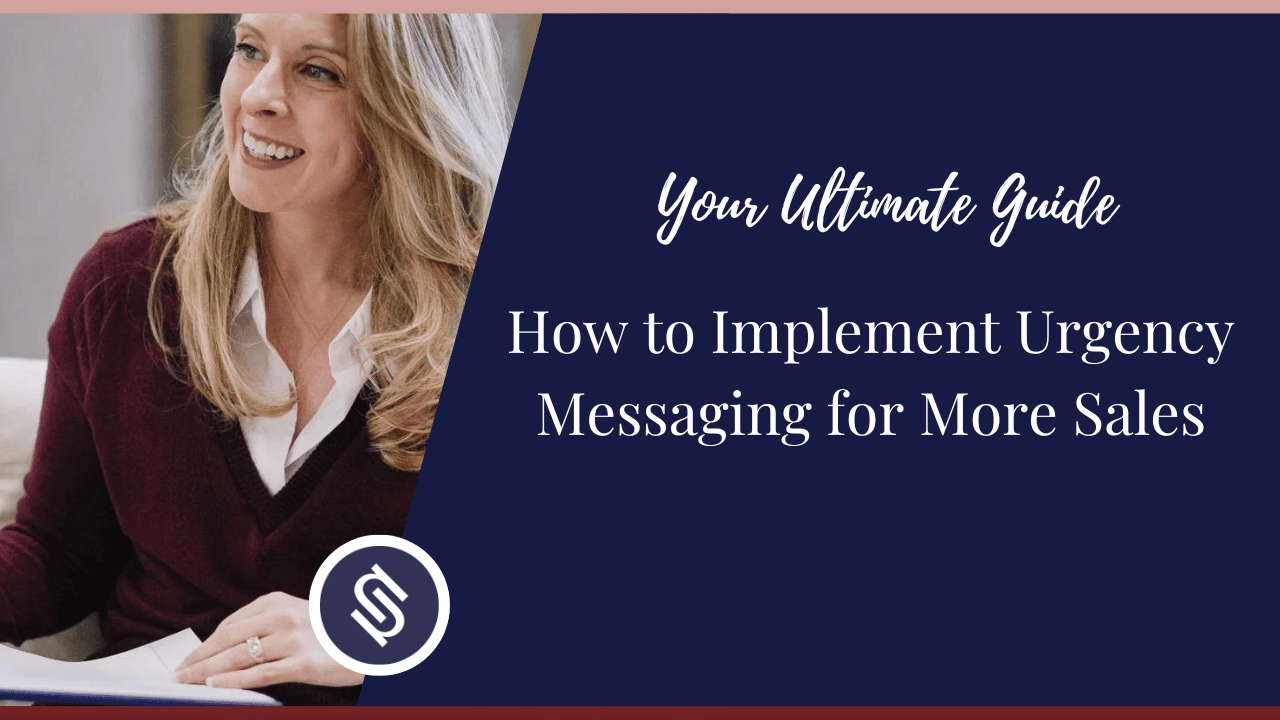You have an amazing product, and your market needs it. So, it’s safe to assume it should be selling like hotcakes.
But instead of the cash register announcing sales, you hear the deafening sound of silence.
What’s the problem?
Maybe it’s not that your product needs work. Often, it boils down to product messaging.
You know your product will address your market’s needs–but do they know that?
In this article, I’ll help you understand how product messages work and how you can write messaging that resonates with your audience and drives more sales.
If you’re already feeling overwhelmed by it all, let me help you. Start a FiniSprint with me, Nora Sudduth, for real-time, one-on-one support to improve your marketing strategy.

TL;DR – 4 Steps to Create Product Messaging from Scratch
Can’t read the whole article now? You can save it for later.
For now, here’s an overview of how to create product messaging from scratch:
- Define your product’s core value
- Research your audience
- Conduct an internal review of your message
- Test your messaging and analyze the results
- Finalize your messaging
Read the full article, where I elaborate on these steps and guide you on creating an effective product messaging strategy that works.

What is Product Messaging?
Product messaging is how you communicate your product’s value to your target market.
It has two main elements:
- Product Description: What your product is, why it exists, and who needs it.
- Product Benefits: Tell potential customers what solutions your product provides and what pain points it addresses. These explain why your product is worth your market’s time and money.
Without a clear product message, potential customers may be confused about your offer or fail to understand how your product can make their lives easier.
In other words, it’s a value messaging strategy focused on communicating your product and its benefits.
What is In-Product Messaging?
In-product messaging is a product messaging strategy that happens while users actively use a product or navigate a website.
Examples of this type of messaging are:
- Online chats
- Tooltips
- Product walkthroughs
- Update alerts
- Surveys
Think of those message pop-ups that appear as you navigate a website or receive notifications while using an app.
These help personalize customer experience, reinforce your product’s value, and provide further support.

What is Dynamic Product Messaging?
Dynamic product messaging is another type of messaging strategy that uses AI to tailor customer experience further and deliver messages for specific interactions and buyer stages.
This tactic draws from consumer psychology and an in-depth understanding of each buyer’s persona to influence customer choice.
Examples of dynamic product messaging are:
- Product recommendations: An example is the “You might also like” pop-up that lists similar offerings.
- Product badges: Depending on individual user data, badges can highlight price points or product features like “Bestseller” or “50% off”.
- Notifications about customer activity: Examples of this are those that highlight scarcity (“Limited time offer!” or “Few seats left”) and customer behavior (350 other people bought this product today”).
Messaging vs. Positioning
Positioning is what sets your product apart from similar offerings and dictates how your audience should perceive it.
On the other hand, messaging is how you communicate your product’s value to potential customers.
When creating a messaging hierarchy, you must establish your product’s positioning to communicate its benefits to your audience effectively.

Why is Product Messaging Important?
Product messaging is crucial for a marketing strategy, mainly because to convert passive onlookers into customers, you need to communicate clearly and compellingly what your product is about.
Here are other ways that product messaging benefits your business:
- Directs your ICP’s understanding of your product: You get to tell–in the most impactful way–what you offer your ideal customer profile (ICP). This also ensures that their understanding of your product is correct.
- Convinces potential customers to buy: Your product messaging is your main pitch. You have only a few seconds to capture your audience’s attention. Product messaging makes it count.
- Communicates your product as a solution: Effective messaging lets people know what pain points your offering addresses and how it can improve their lives.
- Differentiates your product from the competition: This gives your product a competitive edge, helping to move customers further in the buyer journey.
Product Messaging Examples
Looking for inspiration?
These real-world examples show how effective product messaging can impact your marketing strategy:
1. Loom
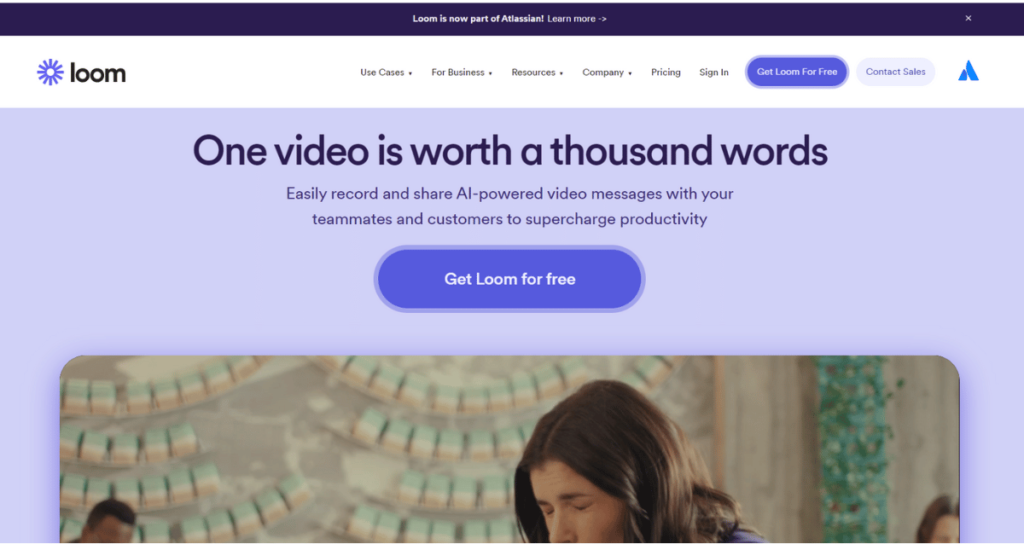
Loom goes straight to the heart of what they’re about–a video recording service that boosts productivity. Because “one video is worth a thousand words.”
This product messaging works because of two main things:
- It succinctly yet compellingly describes the product and who it’s for.
- Captures attention with a hook above the fold.
When creating product messages, you want to avoid being overly verbose.
Always assume that your target audience doesn’t have the time to read through a big block of text because they almost always don’t.
Loom does this well without sacrificing the description of its product. In fact, it invites people to learn more.
The placement of a demo video also works, especially because a video demonstrates their value proposition better than a catchy tagline–a clever way to walk the talk!
2. ClickUp
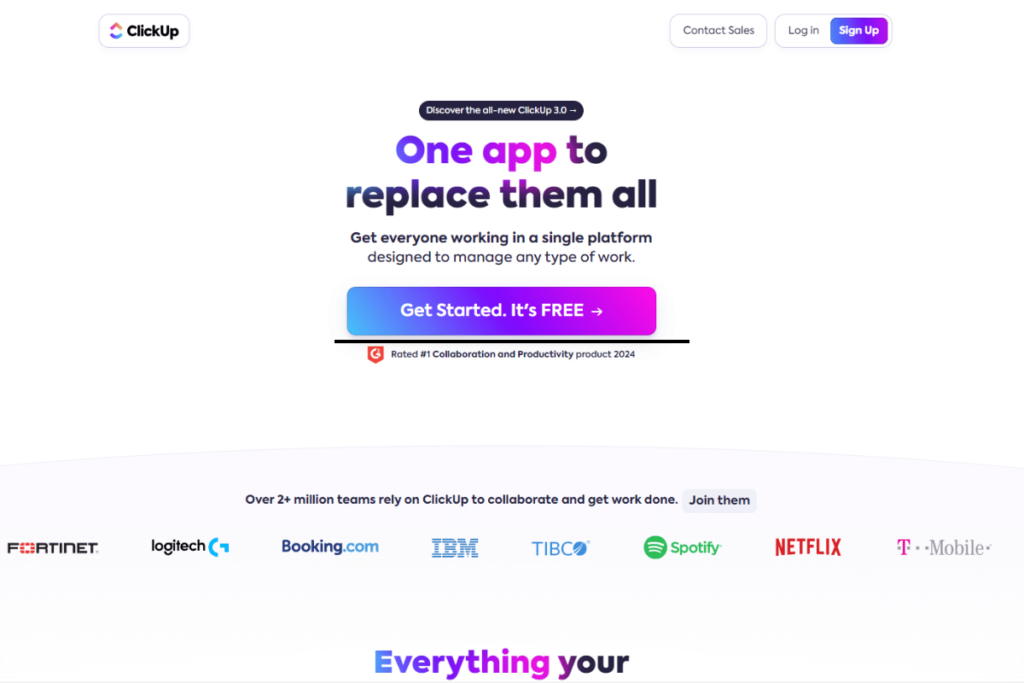
ClickUp has a great value proposition for project managers everywhere.
You only need one app to manage your projects and teams. From docs to time tracking to chat, ClickUp has everything you need for seamless workflows.
Their product messaging is impactful because it addresses one major pain point for people who work remotely: managing projects usually involves so many apps and messy processes that make collaboration challenging.
What’s even more impressive is you understand that just by reading the tagline, “One app to replace them all.” We instantly get it, don’t we? And the idea of trading all the apps we use for managing workflows for just one is pretty enticing.
Drawing people in by showing how you are the solution to their problems is a sure way to get attention.
What is a Product Messaging Framework?
A product messaging framework structures your product messaging using a top-down hierarchy.
It starts with an umbrella statement that contains your value proposition, which is often the tagline and proceeds to detail more specific information about the product, such as:
- Target audience
- Messaging pillars or themes that elaborate on your value proposition
- Proof points or features that set your product apart

5 Steps to Create Product Messaging from Scratch
Ready to develop product messaging for your business?
Follow this guide to get started:
1. Define Your Product’s Core Value
You know you have a great product, but your audience needs to know that, too, if you’re going to sell.
Digging deep to define your product’s core value–what it’s for and why it exists–is crucial to creating a compelling message.
Start by asking yourself how it all started. Did you encounter a problem that you wanted to solve?
Create an overarching statement that encapsulates your product’s description, its benefits, and why it exists.
2. Research Your Audience
Now, look outward.
As always with any type of marketing, understanding your audience is vital to shaping messages that resonate.
This is the time to define your ideal customer profile (ICP) or buyer persona.
To develop your ICP accurately, conduct market research, listen to industry-related discussions online, and evaluate your existing customers’ experiences.
Once you understand what your potential customers want, tie up your product’s description with the pain points that your product addresses to create a unique value proposition.
3. Conduct an Internal Review of Your Message
Your messaging has taken shape by this time, but it’s not quite there yet.
To finalize your message, present your product message to key stakeholders (like your sales, customer support, or product development teams) for review.
Gather their feedback and adjust your messaging accordingly before taking it public.
4. Test Your Messaging and Analyze Results
Once you’ve refined your messaging, it’s time to test its effectiveness in a real-world setting.
Choose message testing methods that apply to your type of product and what stage of the product launch journey you’re in (before, during, or post-launch).
Testing methods can be either qualitative (such as interviews and open-ended questionnaires) or quantitative (short surveys, A/B testing, five-second tests, etc.).
Monitor how representative groups from your target audience respond to your message and analyze results to further refine your message for the most impact.
5. Finalize Your Messaging
Your message testing results are a gold mine of information you can use to take your message to its final, most compelling version.
Once you’ve polished your messaging, you can launch it with the concerted efforts of different team members.
For instance, your marketing team will do much of the heavy lifting pre-launch (preparing marketing collaterals like social media posts, blogs, and landing page copy).
However, your sales, customer service, and product management teams significantly ensure that your messaging stays consistent at all business levels.
Congratulations, you’ve just created product messaging from scratch!
Does the whole process sound too complicated for you? Hire an expert who can take on the job from start to finish. Schedule a discovery call with me today to start a campaign that drives results.

What Are the Key Elements of Effective Product Messaging?
When you’ve created and launched your product messaging, now what?
It’s best to regularly revisit your message to ensure it stays relevant and produces the level of engagement you want for your brand.
When evaluating your messaging, here are essential elements you must look at:
Value Proposition
Perhaps the most crucial element of your messaging is your unique value proposition. And it’s not just a description of your product, either. Revisit how you deliver what your product is about to ensure that it’s clear and communicates your product’s benefits in the most engaging way possible.
Positioning Statement
Your positioning statement defines what sets you apart from the competition and highlights unique selling points that make your product the logical choice for your target market.
Target Audience
Does your message speak to your target audience? Is it communicated in their language? Do they relate to it? Does it resonate with them and influence their choices? Being thorough in your market research is vital to deeply understanding what makes your market tick.

How to Improve Product Messaging
Developing various iterations is necessary, not an option, when crafting effective product messaging. It has to evolve as your audience and context evolve.
Here are ways to refine your message:
- Focus on the benefits, not the features: Your features are essential, but they should not be the main focus of your message. Instead, focus on what your product can do for your market–what problems it solves and how it can improve their lives.
- Leverage social proof: People naturally look to the experience of others when trying out something new. So, use social proof to boost your credibility and entice others to follow suit. This can be user testimonials, reviews, and expert recommendations.
- Tell a story: Shape your messaging using storytelling techniques to appeal to your audience’s emotions. For example, you can frame your message around the experiences of an ideal customer or a narrative that potential customers relate to.

Frequently Asked Questions (FAQs)
I’ve answered the following commonly asked questions about product messaging to help you understand the concept better:
How Can Product Messaging Influence Customer Perception?
Compelling product messaging influences customer opinions and behavior because it presents a product as the solution to pain points that an ideal customer profile needs addressing.
Shaping your messaging so that it not only resonates with customer experience but also aligns with their thought process, language, and aspirations makes it even more effective at drawing engagement.
What Techniques Can Be Used to Test the Effectiveness of Product Messaging?
You can test your messaging through either qualitative or quantitative methods.
Qualitative testing methods (such as interviews and online discussions) help you gain more in-depth insights into the opinions and feelings of your audience.
On the other hand, quantitative approaches (like surveys) provide feedback quickly from a larger group of participants.
What Role Does Audience Segmentation Play in Product Messaging?
Segmenting your audience allows you to target specific groups of people with messaging that exactly matches their profile, improving the chances of engagement and even leading to more conversions.
How Can Storytelling be Incorporated into Product Messaging?
Using storytelling techniques will help you create a more engaging and memorable message because they help you appeal to your audience’s emotions and humanize your brand.
Examples of storytelling techniques are:
- Show, don’t tell: Demonstrate why your product is worth the money by showing social proof. Highlight results existing customers have achieved using your product or feature an expert’s stamp of approval.
- Don’t bury the lede: Technically, it is a journalistic technique that will also help you craft your messaging with a laser focus on your product’s biggest selling points. Simply put, this expression means to start with the most important information.
- Breathe life to a character/s: People relate better with personal experience, so telling a story drawn from real-life experiences helps draw emotion from and create a connection with your audience.
Conclusion
With this guide, you should be crushing your product messaging!
Remember, communicate a clear value proposition, demonstrate what sets you apart, and understand and target your unique buyer persona.
All good things take time, so you shouldn’t rush the message development process. Dig deep to understand your positioning and amplify it using a messaging strategy.
If you don’t have the time for the nitty-gritty of this marketing work, hire an expert who can do it for you.
I’ve worked with brands that have sold over $500M worth of products and services. That can happen for your business, too. Book a discovery call with me, and let’s make your product sell!



